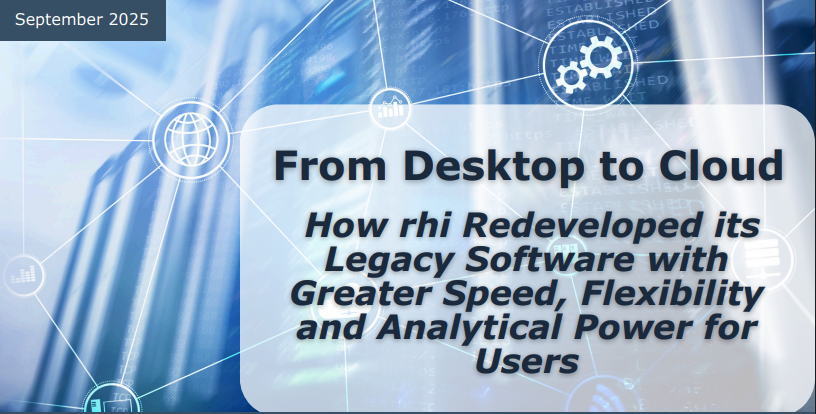Modernising software that has been in use for many years is always more than a technical upgrade. It is usually an opportunity to reflect on how an organisation works, how decisions are made and how value is delivered to customers. Over the past year, I have had the opportunity to support rhi in the Agile redevelopment of rhiCOMS, a system that has been used widely across the energy infrastructure sector.
rhiCOMS originally operated as a desktop application and had served the organisation well for more than two decades. With growing expectations around real-time insight, flexible analysis and cloud scalability, the team at rhi decided to redesign the platform so that it could better support current and future business needs. The goal was not only to rebuild the system but to rethink how it could offer faster access to reliable data and a more user-centred experience.
My involvement focused on supporting the team in applying Agile principles practically and purposefully. This included developing clarity around what creates value, encouraging iterative delivery and helping the team adapt their approach based on frequent feedback from stakeholders.
The new cloud-based version of rhiCOMS has now been in use for several months and has already shown measurable improvements. Users have access to real-time information, evaluations that previously required significant manual effort are now completed much more quickly and the system offers greater flexibility for organisations that operate across multiple regions and currencies. Just as importantly, the redevelopment has helped internal teams gain confidence in collaborative and adaptive ways of working.
If you would like to learn more about the details of this transformation, the full case study is available below. It describes the challenges faced by rhi, the approach taken by the team and the outcomes achieved through this work.
View or download the case study of Agile redevelopment of rhiCOMS
You can read the full case study directly on this page once the PDF is embedded using the WordPress file block. A download link is also available for those who prefer to view the document offline.
📄 Download the case study (PDF)
This product development is a strong example of how organisations can approach legacy modernisation in a way that is both technically sound and aligned with real business needs. If you are planning a similar initiative or considering how Agile ways of working could support your organisation, I would be happy to speak with you.
The original case study was first published by Scrum.org. This post includes my reflections and additional commentary.
Let’s work together to bring the organisations of the future.
Share this content:
